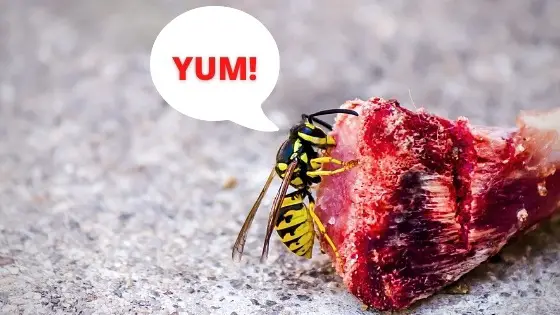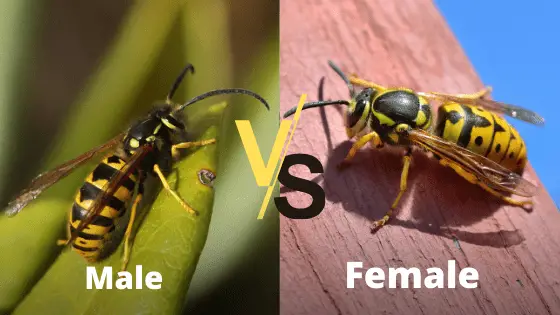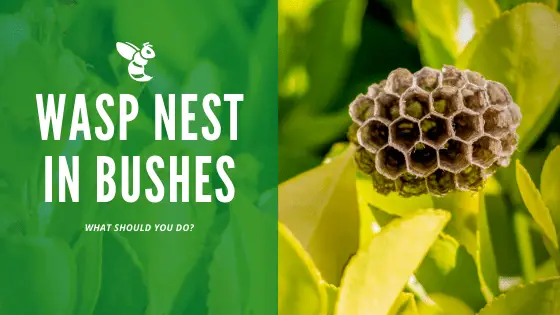Do Wasps Eat Meat?

The diet of a wasp will be based on the specific variety of that wasp. Most wasps feed insects to their larvae, while they frequently feed on nectar for their own sustenance. If you spot a wasp in your yard, they’re probably busy looking for food and often easy meals, such as meat left outside or in the garbage.
They’re not going to bother you unless you’re irritating them or threatening their nest. If you have a wasp nest in your yard, it’s beneficial to know what they like to consume. This can help deter them from your yard in many scenarios. Do you understand the diet of wasps?
Do Wasps Eat Meat?
Yes, the most common variety of wasp that you’ll find consuming meat would be the yellow jacket. They have the physical ability to consume and digest meat for its protein. This would also apply to the bodies of insects in the area.
What Meat Attracts Wasps?
Wasps don’t have a specific cut of meat that they like to munch on, but they’ll definitely be attracted to anything leftover on your patio or in your trash can. Many wasps search for any protein that they can find, which applies to meat like chicken scraps, pieces of beef, turkey, etc.
If you’re a big fan of grilling food on your patio in the summer, this is going to be a huge attraction for wasps in your yard. They’ll wait until your grill has cooled down before they make their way inside and munch on any scraps stuck to the grill or have fallen inside.
Do Wasps Eat Dead Animals?
Whether or not you find wasps consuming a dead animal really depends on the length of time that the animal has been dead. Wasps will frequently eat things like snakes or rodents if they’ve recently passed away in the area. Because this is an easy source of protein for them, they won’t pass up this free meal. They will also utilize dead insects that they find.
How Do Wasps Eat Meat
Wasps have the ability to cut things up into little pieces and take it back to their nest. Their mandible is the part of their body that they use for this process. The mandible is essential a set of pinchers that they can maneuver open and closed. With sharp edges on each side, this creates a cutting force.
Wasps don’t have teeth inside of their mouth, but they can use their mandible to pulverize meat and insects, moving it into their mouth once it’s broken down enough that they can finish up by ‘chewing’ and licking the meal.
Types of Wasps That Eat Meat
Two main types of wasps exist in the world. There is the social wasp that will belong to a colony structure of wasps that work together to thrive. There are also solitary wasps that live and function on their own.
Wasps from both of these varieties can eat meat, and they will do so if this provides them with the ability to find a protein-rich meal. Yellowjackets, black wasps, paper wasps, cicada killers, and many other types of wasps will eat meat and insects as their main protein source.
Other Insects That Eat Meat
There are approximately 925,000 different species of insects located on the Earth right now. Of these different species, many different insects will consume meat as their meal for the day. Beetles, flies, ants, bees and wasps are just some of the insects that will consume meat, whether cooked, raw, from a dead source, etc.
These scavengers are interested in feeding their young and themselves. They will continue searching for their food source until their job is complete for the day or week.
Conclusion
If you are having a wasp or insect issue on your property that you can’t seem to get a good handle on, it’s a good idea to pay close attention to what you’re leaving out. You may think that you’re disposing of your scraps once you’ve eaten, but wasps aren’t very big. They only need small crumbs of food to thrive.
Make sure that you clean off your patio or deck after eating. Put your grill away in your garage or shed when you’re done cooking, and it’s cooled off. A few extra steps each evening can make a big difference in how many insects you see on your property.



